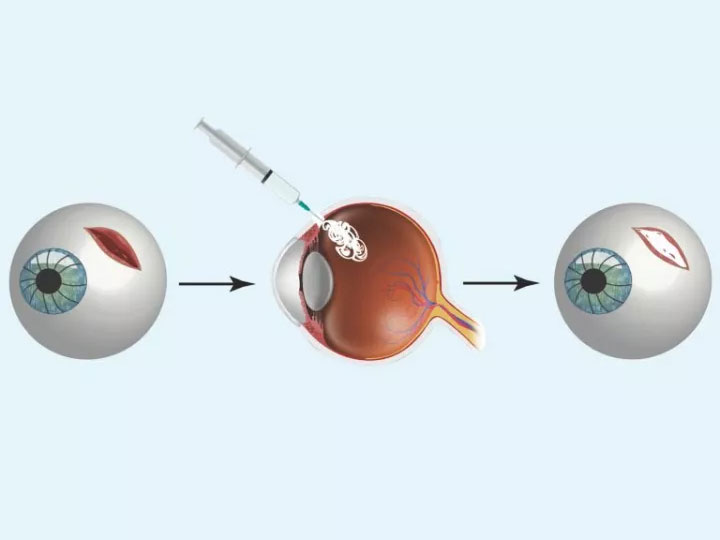The eye is a very fragile part of the body, and accidental damage to the eyes can make it hard to get instant professional repair in many cases; How to quickly and effectively close the eye damage, to save the injured eyesight, is of great significance. Perhaps at this time, the hospital is still far away, medical assistance is to race against time.
Scientists from the University of Southern California (USC) have developed a gel that quickly closes the eye's damage and helps to solve the problem, seeking effective time for patient follow-up and recovery. Interdisciplinary teams are involved in this process. They developed a reversible, temperature-sensitive gel that temporarily blocked eye damage. When applied to the eye, this gel changes from a liquid to a super semi-solid. When the patient is ready for surgery, the doctor can remove the seal by adding cold water.
The study was published on December 6 in Science Translational Medicine.
"If you look at the historical figures for the past decades, the percentage of eye-related war injuries has risen from 1 percent to 10 percent to 15 percent, some of which can be attributed to changes in war, Especially when using improvised explosive devices, "says John Whalen, an assistant professor of ophthalmology at the Roski Eye Institute at the University of Southern California. He is a member of the USC Institute of Biomedical Therapeutics. "When the Department asked the scientific community to develop new ways to treat eye injuries, we immediately came up with an advanced material that we have used as an adhesive for retinal implants."
The material used for retinal implants is a hydrogel, called PNIPAM, poly (N-isopropylacrylamide), which has the unique property of being well suited for this direction of application: when cooled, This gel will be liquid and easy to use. As the temperature rises, it will become a viscous semi-solid with strong adhesion.
"Because the initial hydrogel transition was at a temperature very close to that of human eyes, we needed to tailor its properties to ensure a fast solid state seal when applied to the eye," says study leader Niki Bayat. Now this intelligent hydrogel offers a perfect, reversible closure that promises to be the second generation of tissue adhesives. "
When the ophthalmologist is ready to repair the eye, the hydrogel can be removed by reducing the viscosity of the cold water added to the eye.
The team also developed a special hydrogel syringe that can be easily used at the front and quickly cool the hydrogel before use. The syringe has a cooling chamber filled with ammonium nitrate crystals - a quick-frozen ice pack. By adding water to the chamber, the crystal can activate and cool the hydrogel within 30 seconds.
"We wanted to optimize the delivery so that it not only cooled the hydrogel quickly but also filled the eye's perforation with a 10-minute window while maintaining its temperature," Whalen said. "It's easy to use Almost as if the bathroom's closures are closed. "
This method will also reduce the overall wound closure time of the eye. This temporary intervention can reduce the original repair time of 30 minutes or more to less than 5 minutes, and strive for valuable time for medical staff. In the rabbit model, hydrogels improve the pressure inside the eye, which is crucial for preventing retinal detachment eventually leading to vision loss. Researchers hope to begin clinical safety testing of humans in 2019.



